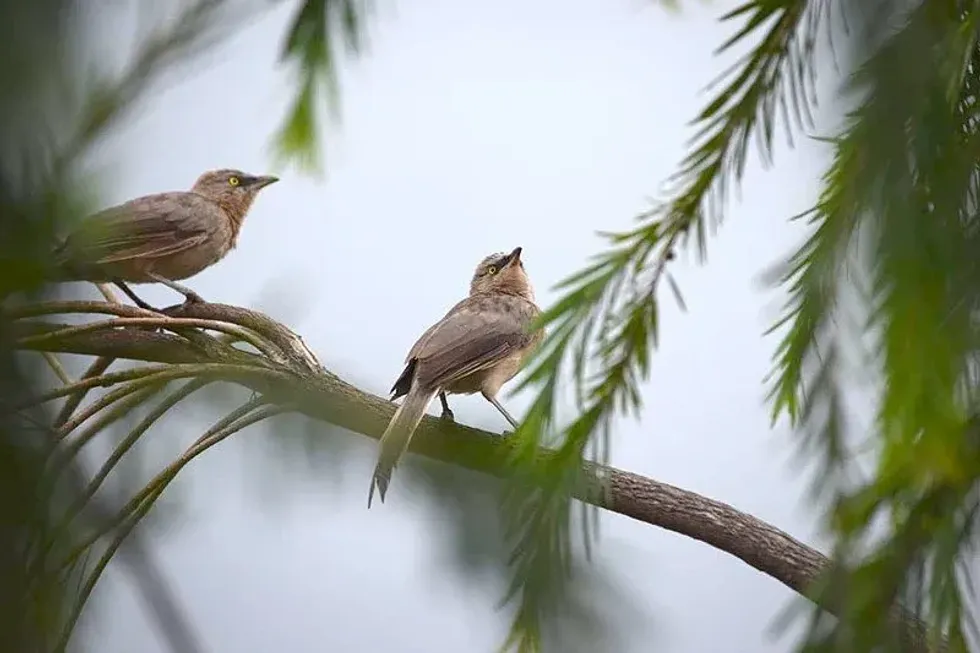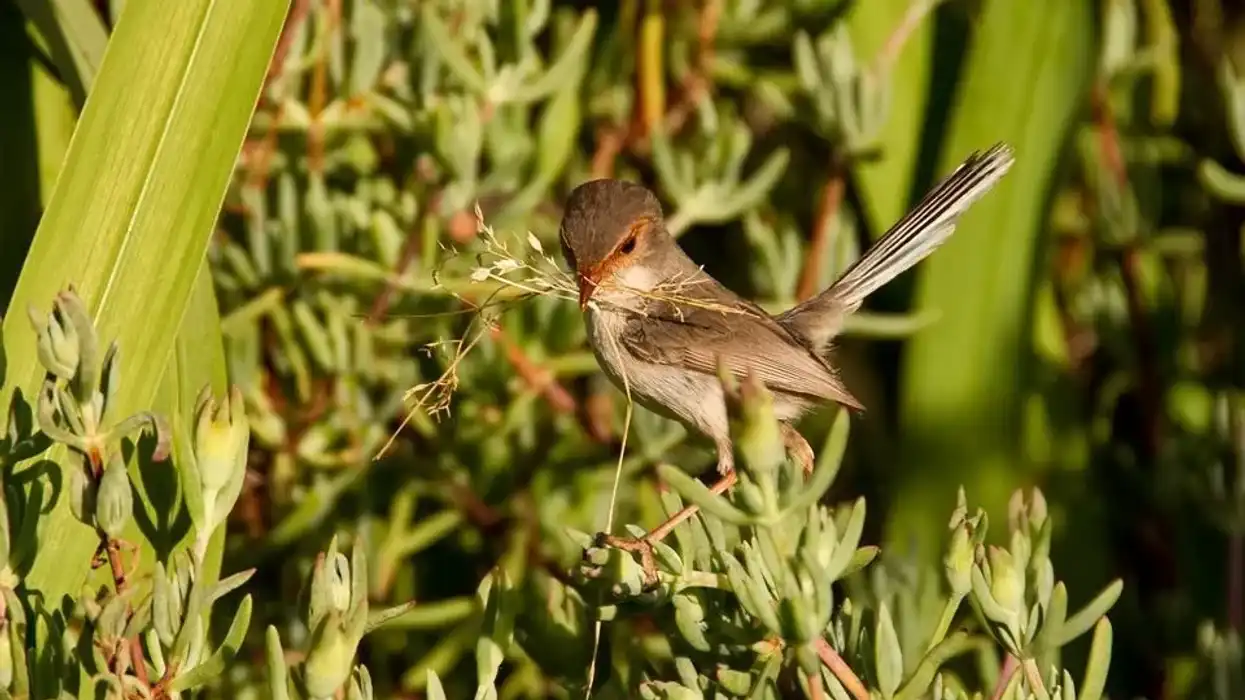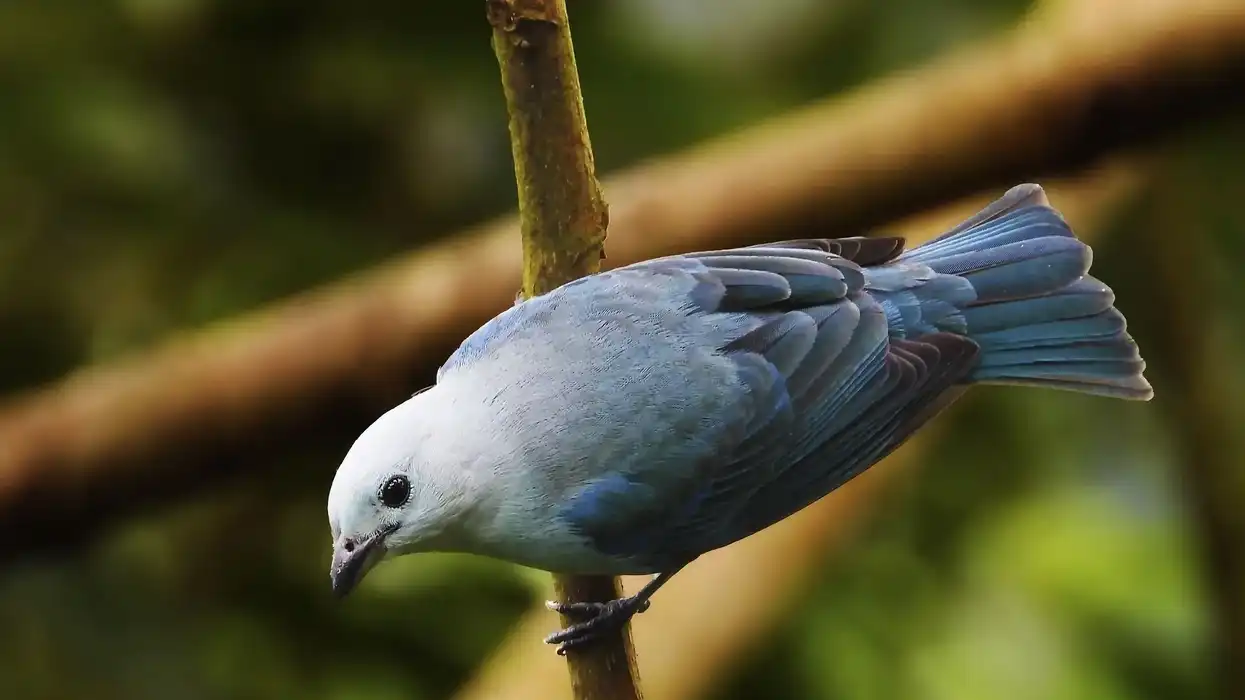The large grey babbler (Turdoides malcolmi) is a large bird in the genus Turdoides.
Part of the family Leiothrichidae, the bird species has its range of distribution in the scrub, open forest, and garden land all over India and far western Nepal. The bird species has always been related to the jungle babbler and their range also overlaps in the huge swathes of central and western India.
Large grey babbler birds are found in small flocks of around 10 birds and keep in contact with each other with loud nasal calls.
The scientific name of the large grey babbler (Turdoides malcolmi) is given to commemorate the person who collected the specimen sample first, Major-General Sir John Malcolm. It is a common species found all over its region of occurrence. The birds are distinguished both by their sound as well as their appearance.
The whitish outer feathers to their long tail are one of the most recognizable features in the birds. Identification of these birds can be done by a brownish body and dark lores.
Pale grey coloration is seen on the rump and upper tail covers. The bird has darker brown wings and a yellow iris. There are cases of some species of these birds showing albinism or leucism.
The usual diet of this species is similar to other members of the genus of the family Leiothrichidae. The birds are known to feed on insects, seeds, grains, and berries.
For more relatable content, check out these frigate facts and great frigatebird fun facts for kids.
Large Grey Babbler Interesting Facts
What type of animal is a large grey babbler?
The large grey babbler (Turdoides malcolmi) is a species of babblers found in India and Nepal.
What class of animal does a large grey babbler belong to?
The large grey babbler (Turdoides malcolmi) falls under the class of Aves in the kingdom of Animalia.
How many large grey babblers are there in the world?
The population numbers are not known for these birds, however, it is said to be stable currently and there is no immediate threat to the population. The extent of occurrence is 895757 sq mi (2,320,000 sq km).
Where does a large grey babbler live?
The species is found across India and far western Nepal. The birds are found south of the Himalayas to the east of the Thar desert until Bihar. The birds are also seen in northeast Pakistan. A small population of the bird is also found in Puducherry.
They are not found in east India, Tamil Nadu, Kerela, and the presence of a population in the Sind area is not recorded. The species was first described in the Deccan Plateau region.
Groups of these birds have been seen in the gardens of Hyderabad and Pune. However, in urban cities like Bangalore, they are only seen in the outer areas covering the city.
What is a large grey babbler's habitat?
The habitats of these birds include open dry scrub forests and cultivated regions. They are also found in fallow land, open plantations, gardens, and village environments.
Who do large grey babblers live with?
The birds are known for their social nature and live in small groups of around 10 individuals.
How long does a large grey babbler live?
The lifespan of the species is not known. However, the associated species called the jungle babblers live for around 17 years in captivity.
How do they reproduce?
These birds breed throughout the year. However, most activity is seen in the months from March to September. An average clutch of four eggs is laid by the females and all the members of the group take part in the caring process.
This process is also called cooperative breeding. The nest is shaped like a cup and is kept in a shrub often of thorny species. Nests are made with the help of one or two helpers with twigs, grass, and roots.
What is their conservation status?
The conservation status of the large grey babbler (Turdoides malcolmi) is categorized as Least Concern by the IUCN Red List. The range of distribution of the species is extremely large and the population is also currently considered stable. However, habitat loss and hunting can be considered a cause of concern and should be minimalized, if not stopped immediately.
Large Grey Babbler Fun Facts
What do large grey babblers look like?
The identification of the bird is characterized by a brown body with creamy white outer tail feathers. These feathers are only visible when the birds fly with fluttery wing beats low over the ground. They have dark lores.
The forehead is grey-colored with white shaft streaks on the feathers. Pale grey coloration is seen on the rump and upper tail covers. The mantle however has dark blotches or spots.
A darker brown coloration is seen on the wings. The iris is colored yellow. The birds have a long tail that is cross barred, albeit faintly.
How cute are they?
They can be considered quite cute.
How do they communicate?
The birds are known to keep in contact with others in the group with the help of a loud nasal call.
How big is a large grey babbler?
The bird species have a length around 10.5-11 in (26.6-28 cm).
How fast can a large grey babbler fly?
The speed of flight is not known.
How much does a large grey babbler weigh?
The weight of the bird is not known.
What are the male and female names of the species?
Males and females of the species are not given different names.
What would you call a baby large grey babbler?
A baby is called young or juvenile
What do they eat?
The main diet of these birds consists of insects but they may also feed on grain, seeds, and berries.
The jungle babbler, a species of babblers found in the Indian subcontinent, usually has a diet of insects and invertebrates consisting of grasshoppers, ants, wasps, cockroaches, termites, beetles, moths, crickets, spiders, caterpillars, and flies.
Are they friendly?
They are very sociable and friendly. As they are also found in gardens and parks, they do not consider humans as threats.
Would they make a good pet?
They are not usually considered pets.
Did you know...
As the habitat of the large grey babbler (Turdoides malcolmi) coincides with that of the jungle babbler, they probably have the common enemy in snakes. However, the nests are usually parasitized by bird species like the pied cuckoo and the common hawk-cuckoo. This is similar to the jungle babbler.
The bird was first found in the Deccan Plateau region.
What noise does the large grey babbler make?
The call is basically loud nasal calls made to communicate with each other within the flock. A repetitive, plaintive 'kay-kay-kay-kay' noise is heard most of the time. This is less squeaky than the jungle babblers. However, when alarmed, the bird makes a nosy chattering voice.
Do large grey babblers migrate?
They are not known to migrate.
Here at Kidadl, we have carefully created lots of interesting family-friendly animal facts for everyone to discover! For more relatable content, check out these tawny owl facts and hornbill facts for kids.
You can even occupy yourself at home by coloring in one of our free printable large grey babbler coloring pages.










